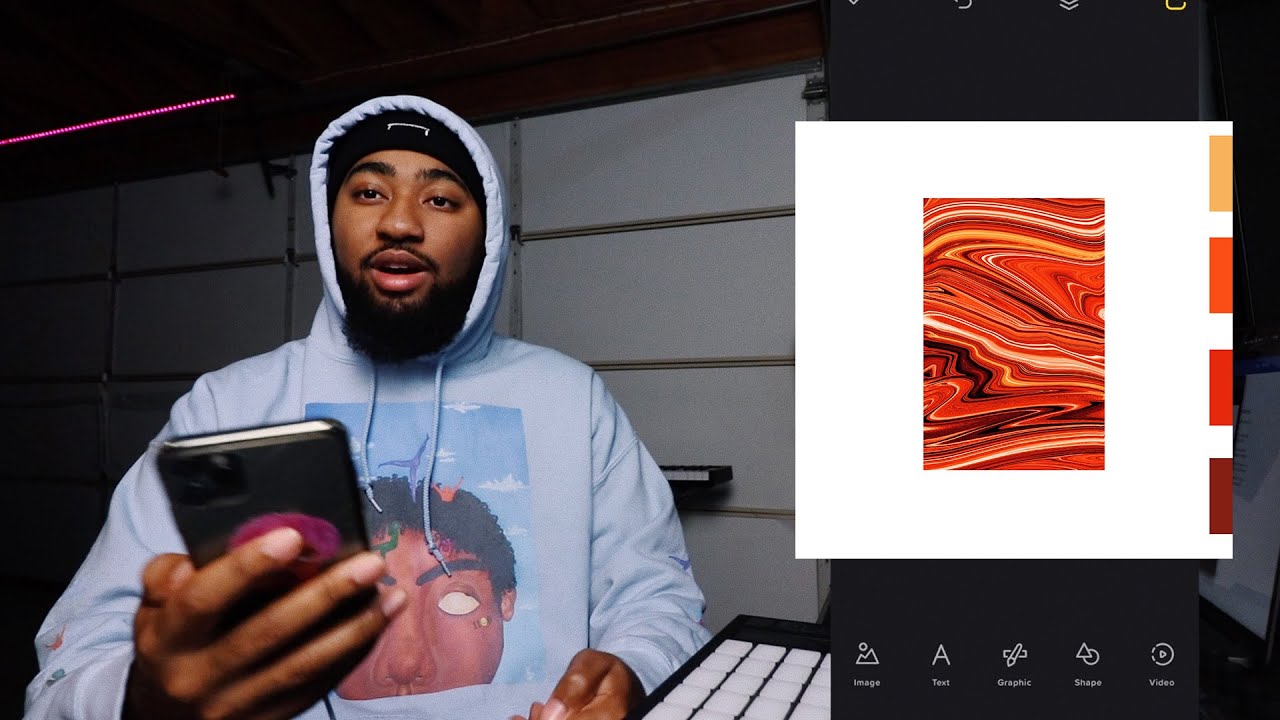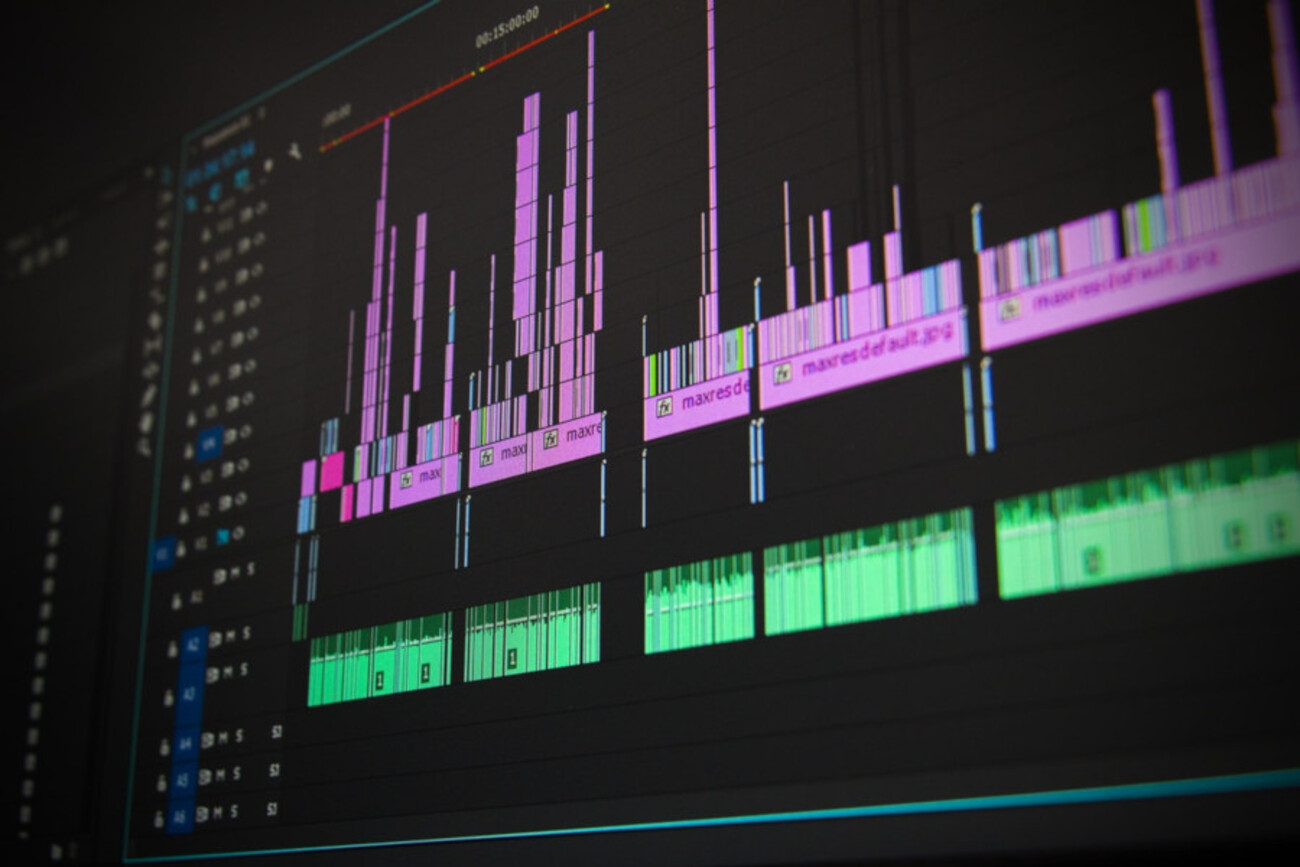Home>Production & Technology>Cover Song>How To Put A Cover Song On Your Album


Cover Song
How To Put A Cover Song On Your Album
Modified: January 22, 2024
Learn how to include a cover song in your album with our step-by-step guide. Discover the best practices and legal considerations.
(Many of the links in this article redirect to a specific reviewed product. Your purchase of these products through affiliate links helps to generate commission for AudioLover.com, at no extra cost. Learn more)
Table of Contents
- Introduction
- Understanding Copyright Laws
- Securing Proper Licensing
- Choosing the Right Cover Song
- Recording and Producing the Cover Song
- Mixing and Mastering the Cover Song
- Designing the Album Cover
- Including the Cover Song in the Album Tracklist
- Registering the Album with Copyright Societies
- Marketing and Promoting the Album
- Conclusion
Introduction
Welcome to the exciting world of cover songs! Whether you’re a musician looking to add a unique twist to your album or simply a lover of music, cover songs can be a great way to pay tribute to your favorite artists and add a fresh perspective to your music collection. But before you delve into the world of cover songs, it’s important to understand the legalities and intricacies involved in putting a cover song on your album.
When an artist records and releases a cover song, they are essentially performing and recording someone else’s copyrighted work. This means that they need to obtain the necessary licenses and permissions to avoid legal consequences. Understanding copyright laws and securing proper licensing is crucial to ensure a smooth and legal process when incorporating cover songs into your album.
In this article, we will guide you through the step-by-step process of putting a cover song on your album. From understanding copyright laws and securing licenses to recording, producing, and marketing the cover song, we will cover everything you need to know to successfully include a cover song in your album. So, let’s dive in and explore the fascinating world of cover songs!
Understanding Copyright Laws
Before you embark on the journey of including a cover song on your album, it’s essential to have a solid understanding of copyright laws. Copyright laws are in place to protect the rights of the original creators of musical compositions, ensuring that they receive proper recognition and compensation for their work.
As an artist, it is important to respect and adhere to these laws to avoid any legal complications and maintain a positive reputation within the music industry. Here are a few key points to keep in mind:
- Copyright Ownership: The copyright of a song and its composition automatically belongs to the original creator or their assigned copyright holder. This means that you will need their permission to perform, record, and distribute a cover version of their work.
- Public Performance Rights: When you perform a cover song in a public setting, such as at a concert or on a recorded album, you must obtain the necessary licenses from copyright societies or performing rights organizations (PROs). These licenses ensure that the original songwriters receive royalties for the public performance of their work.
- Mechanical Licenses: To record and distribute a cover song on your album, you need to obtain a mechanical license. This license grants you the right to reproduce and distribute the copyrighted composition. Mechanical licenses can be obtained through music publishing companies or organizations, such as the Harry Fox Agency (HFA) in the United States.
- Synchronization Licenses: If you plan to create a music video or use a cover song in a film, television show, or other visual medium, you will need to secure a synchronization license. This license allows you to synchronize the cover song with the visuals of your project. Synchronization licenses are typically obtained directly from the copyright holders.
It’s essential to note that these licensing processes can vary depending on your country’s copyright laws. Therefore, it is recommended to consult with a music lawyer or copyright specialist who can provide guidance specific to your jurisdiction.
By understanding and respecting copyright laws, you can navigate the process of incorporating cover songs into your album while staying on the right side of the law. Obtaining the necessary licenses will not only protect you from legal issues but also ensure that the original creators of the songs are rightfully compensated for their work.
Securing Proper Licensing
Once you have a clear understanding of copyright laws, the next step is to secure the proper licenses for the cover songs you plan to include on your album. Obtaining the necessary licenses ensures that you have legal permission to reproduce and distribute the copyrighted compositions. Here are the steps to secure proper licensing:
- Identify the Copyright Holders: The first step is to identify the copyright holders of the cover songs you want to include. This information can usually be found in the copyright databases or by contacting the music publishing companies associated with the songs. In some cases, the original artist or their representative may also be the copyright holder.
- Reach Out to the Copyright Holders: Once you have identified the copyright holders, reach out to them to request a mechanical license. This can be done by sending a formal letter or email stating your intention to record and distribute a cover version of their song. It’s important to clearly specify the purpose of your request, the recording format (CD, digital, etc.), and the expected number of copies to be sold or distributed.
- Negotiate the Licensing Terms: The copyright holders may have specific terms and conditions for granting the mechanical license. This could include royalty rates, advance fees, or other requirements. Negotiate and agree upon these terms, keeping in mind your budget and the expected commercial success of your album.
- Obtain the Mechanical License: Once you have reached an agreement, obtain the mechanical license from the copyright holders. This license will grant you the legal right to reproduce and distribute the cover song on your album. It is crucial to have a signed agreement or license document that clearly outlines the terms and conditions of the license.
- Keep Records of Licenses: It is essential to keep records of all the licenses you obtain for the cover songs on your album. This includes copies of the agreements, correspondence, and any payments made. These records will serve as proof of your legal compliance and can be useful in case of any future inquiries or disputes.
It’s important to note that the licensing process may take time, especially if you need to negotiate with multiple copyright holders or if the songs are controlled by different music publishers. Therefore, it is advisable to begin the licensing process well in advance to ensure that you have the necessary licenses in place before recording and producing your album.
Securing proper licensing not only protects you from potential legal issues but also demonstrates respect for the original creators and their rights. By obtaining the necessary licenses, you can proceed with confidence, knowing that your cover songs are legally approved for inclusion on your album.
Choosing the Right Cover Song
Choosing the right cover song is crucial to ensure that it fits well with the overall theme and style of your album. It’s important to select a cover song that resonates with you, showcases your unique artistry, and adds value to your music collection. Here are some tips to help you choose the right cover song:
- Connection and Passion: Choose a cover song that you have a strong connection with. Select a song that you are passionate about and that aligns with your musical style and genre. This will allow you to bring your own artistic interpretation to the song and make it your own.
- A Fresh Take: Consider choosing a cover song that you can give a fresh and unique twist to. A great cover version takes the original song and adds a new perspective or adds elements that showcase your individuality as an artist. Experiment with different arrangements, instrumentation, or genre fusion to make the song stand out.
- Audience Appeal: While it’s important to choose a cover song that resonates with you, also consider the preferences and expectations of your target audience. Select a well-known or popular song that has the potential to capture attention and engage your listeners. However, don’t be afraid to choose a lesser-known song if it holds deep meaning for you or if you believe it has the potential to resonate with your audience.
- Showcasing Your Strengths: Choose a cover song that allows you to showcase your strengths as a musician. Whether it’s your exceptional vocal range, guitar skills, or emotional delivery, select a song that highlights your unique talents and gives you the opportunity to shine.
- Staying True to Yourself: While it’s important to put your own spin on a cover song, it’s equally important to stay true to yourself and your artistic vision. Avoid trying to replicate the original version exactly and instead infuse it with your own style and interpretation. This will help you create a distinctive and memorable cover version.
Ultimately, the right cover song should inspire and excite you as an artist and resonate with your audience. It should add value and depth to your album while showcasing your talents and individuality. Take the time to explore different songs, experiment with arrangements, and choose the cover song that becomes a true reflection of your artistry.
Recording and Producing the Cover Song
Once you have chosen the perfect cover song for your album, it’s time to bring it to life through the recording and production process. Recording and producing a cover song requires careful attention to detail to ensure that you capture the essence of the original while infusing it with your unique style. Here are some steps to guide you through the process:
- Pre-production: Start by thoroughly rehearsing the cover song. Familiarize yourself with the original version, its structure, and any key elements that make it stand out. Decide on the desired arrangement, instrumentation, and any modifications you want to make to personalize the song.
- Studio or Home Recording: Decide whether you will be recording in a professional studio or at home. Both options have their pros and cons. If recording at home, ensure that you have a quality microphone, audio interface, and proper acoustic treatment to capture clean and professional-sounding recordings.
- Instrumentation and Vocals: Determine the instrumentation that will be used for the cover song. Besides the usual instruments in your band, consider adding additional instruments or experimenting with different sounds to give the song a fresh twist. Pay careful attention to the vocal performance, aiming to deliver a heartfelt and captivating rendition.
- Arrangement and Production: Arrange the cover song to suit your desired style and artistic vision. Experiment with different tempos, dynamics, and instrumentation choices to make the song your own. Consider using production techniques such as layering harmonies, incorporating unique effects, or adding electronic elements to create a fresh and distinctive sound.
- Mixing: Once the recording is complete, proceed to mix the cover song. Balance the levels of each instrument and vocal track, ensuring clarity and cohesion in the overall sound. Apply EQ, compression, and other audio processing techniques to enhance the mix, creating a polished and professional result.
- Mastering: The final step in the production process is mastering. This involves fine-tuning the overall sound, ensuring consistency across tracks, and preparing the cover song for distribution. Consider seeking the assistance of a professional mastering engineer to achieve the best possible sound quality.
Remember, capturing the essence of the original song while infusing it with your unique style and production choices is key. Pay attention to the details, experiment, and take the necessary time to craft a cover song that stands out and showcases your artistry.
Mixing and Mastering the Cover Song
Mixing and mastering are essential steps in the production process that ensure your cover song sounds professional, cohesive, and ready for distribution. While mixing focuses on balancing individual tracks and creating a harmonious mix, mastering takes the final mix and polishes it to achieve optimal sound quality. Here’s how to approach mixing and mastering your cover song:
- Mixing: Begin by importing all the tracks of your cover song into a digital audio workstation (DAW) or mixing console. Adjust the levels of each track to achieve a balanced mix, ensuring that no instrument or vocal overpowers the others. Use equalization to shape the tone of each element, applying compression to control dynamics and create consistency. Experiment with panning to create a sense of width and space in the mix. Apply effects such as reverb, delay, or modulation sparingly to enhance the overall sound.
- Listened from Different Systems: As you mix, listen to your cover song on various playback systems, such as studio monitors, headphones, and car speakers. This allows you to ensure that the mix translates well across different listening environments. Make adjustments as needed to achieve a balanced and polished sound that sounds good no matter where it is played.
- Bounce the Mix: Once you are satisfied with the mix, bounce it down to a stereo audio file. This will serve as the foundation for the mastering process.
- Mastering: Mastering is the final step in the production process, where the stereo mix is refined and prepared for distribution. It involves using a combination of EQ, compression, stereo enhancement, and other tools to enhance the overall sound, balance frequencies, and ensure consistency across tracks. Mastering also involves setting appropriate levels, adding fades, and creating a seamless transition between songs on the album. If possible, consider seeking the services of a professional mastering engineer to maximize the potential of your cover song.
- Quality Check: After mastering, conduct a thorough quality check by listening to the final master on different audio systems. Ensure that the song sounds balanced and cohesive, with no noticeable issues such as distortion, excessive noise, or harsh frequencies. Make any necessary adjustments or corrections before finalizing the master.
Remember, both mixing and mastering are processes that require technical knowledge, experience, and a good set of ears. Don’t hesitate to seek guidance from audio professionals or invest in quality plugins and mastering software if you are handling the process yourself. With careful attention to detail during mixing and mastering, your cover song will sound impeccable and ready to be enjoyed by listeners.
Designing the Album Cover
The album cover plays a crucial role in capturing the attention and interest of your audience. It serves as a visual representation of your music and can contribute to the overall branding and identity of your album. Designing an eye-catching and compelling album cover is essential to make your cover song album stand out from the crowd. Here are some tips to help you create a captivating album cover:
- Conceptualize the Cover: Begin by brainstorming ideas for the album cover that align with the theme and mood of your music. Consider the emotions evoked by your cover song and think about how you can visually represent them through imagery, colors, and typography.
- Hire a Professional Designer: If you lack design skills or want a high-quality result, consider hiring a professional graphic designer. They can bring your vision to life and ensure that the album cover is visually appealing and aligned with your artistic vision.
- Choose the Right Imagery: Select imagery that reflects the essence of the cover song or the message you want to convey. It can be a photograph, an illustration, or a combination of elements. Ensure that the imagery is clear, visually interesting, and communicates the mood of the music.
- Typography and Fonts: Choose fonts that complement the overall design and are legible. Consider the style and genre of your music to guide your font selection. Experiment with different typography treatments, such as bold or handwritten fonts, to add visual interest and enhance the impact of the album title and artist name.
- Color Palette: Pick a color palette that enhances the mood and atmosphere of the album. Colors can convey different emotions and create a sense of harmony or contrast. Consider the genre and theme of the music when selecting colors, ensuring they align with the overall aesthetic of the album.
- Balance and Composition: Maintain a balance between the various elements on the album cover, such as the imagery, typography, and any additional design elements. Create a composition that is visually pleasing and guides the viewer’s eye smoothly across the cover.
- Back Cover and Inner Sleeve: Don’t forget to design the back cover and inner sleeve of the album as well. Include relevant information such as tracklisting, credits, lyrics, and additional artwork. Ensure that the design of these elements is consistent with the overall theme and style of the album cover.
Remember, the album cover is the first impression your audience will have of your cover song album. It should be engaging, visually appealing, and reflective of the music within. Take the time to carefully design an album cover that captures the essence of your music and entices listeners to explore your album further.
Including the Cover Song in the Album Tracklist
The placement of the cover song in your album tracklist is an important consideration that can impact the overall listening experience and flow of the album. Here are some factors to consider when including the cover song in your tracklist:
- Positioning: Consider the impact and significance of the cover song within your album. Is it a standout track that you want to showcase or does it serve as a complement to the original songs? Depending on your intention, you can place the cover song at the beginning, middle, or end of the tracklist.
- Sequencing: Pay attention to the sequencing of songs leading up to and following the cover song. Ensure that there is a smooth transition in terms of style, tempo, and mood to maintain a cohesive flow. Carefully consider how the cover song adds to the overall narrative or emotional arc of the album.
- Contrast or Continuity: Decide whether you want the cover song to provide a contrast or to seamlessly integrate with the rest of the album. A cover song can add a refreshing change of pace or showcase a different side of your musical style. Alternatively, it can blend seamlessly with the original songs to create a cohesive sonic experience.
- Consider Album Themes: If your album has a specific theme or concept, ensure that the cover song aligns with or enhances that theme. It should contribute to the overall message or story you’re trying to convey through your album as a whole.
- Transition and Segues: Think about how you can create smooth transitions and segues between the cover song and the surrounding tracks. This can be achieved through instrumental interludes, thematic connections, or other creative ways to enhance the listening experience.
- Tracklist Length: Consider the overall length and pacing of your album. If the cover song significantly extends the album, you may need to trim or adjust other tracks to maintain an appropriate duration.
Ultimately, the placement of the cover song in your tracklist should be deliberate and purposeful. It should enhance the overall listening experience and contribute to the cohesiveness of your album. Take the time to experiment with different tracklist arrangements to find the best positioning for the cover song.
Registering the Album with Copyright Societies
Registering your album with copyright societies is an important step to protect your rights as an artist and ensure that you receive proper royalties for your work. Copyright societies, also known as performing rights organizations (PROs), collect and distribute royalties on behalf of songwriters, composers, and publishers. Here’s how you can register your album:
- Select a Copyright Society: Research and identify the appropriate copyright society in your country or region. Examples of well-known copyright societies include ASCAP and BMI in the United States, PRS for Music in the United Kingdom, and SOCAN in Canada. Each society may have specific eligibility criteria or membership requirements, so make sure to review their guidelines.
- Create an Account: Sign up for an account with the chosen copyright society. Provide the necessary information, such as your personal details, contact information, and any additional information about your album or band.
- Register Your Album and Tracks: Once you have an account, follow the instructions provided by the copyright society to register your album and individual tracks. You may need to provide song titles, songwriter and composer information, publishing details (if applicable), and any other relevant metadata.
- Pay Registration Fees: Some copyright societies may charge a registration fee for album and track registrations. Ensure that you understand and fulfill the payment requirements either online or by mail.
- Provide Documentation: In some cases, you may need to submit supporting documentation, such as a copy of your album or proof of ownership, to complete the registration process. Follow the specific instructions provided by the copyright society for document submission.
- Track Performance Royalties: Once your album is registered, the copyright society will track performances of your songs, collect royalties for public performances (including radio airplay, live performances, and digital streams), and distribute those royalties to you according to their distribution policies.
- Maintain Your Membership: Remember to keep your membership and album registrations up to date with the copyright society. This may involve updating track information, providing new releases, and renewing your membership periodically.
Registering your album with copyright societies not only ensures that you receive the royalties you are entitled to but also provides a record of your ownership and rights in the event of any disputes. It is an essential step in establishing your professional presence in the music industry and protecting your creative work.
Marketing and Promoting the Album
Once you have recorded, produced, and registered your album, it’s time to focus on marketing and promoting your music to reach a wider audience. Effective marketing and promotion are crucial to generate buzz, increase album sales, and build a loyal fanbase. Here are some strategies to help you market and promote your album:
- Create a Marketing Plan: Develop a comprehensive marketing plan that outlines your goals, target audience, and strategies for reaching them. Identify the unique selling points of your album and determine the best channels and platforms to promote your music.
- Utilize Social Media: Leverage the power of social media platforms such as Facebook, Instagram, Twitter, and YouTube to connect with your audience. Regularly share updates, behind-the-scenes footage, teasers, and engage with your fans through live streams, Q&A sessions, and contests.
- Build an Engaging Website: Create a professional website that showcases your album, provides information about your music, and offers a convenient way for fans to purchase or stream your music. Include a dedicated page for the album with a tracklist, lyrics, and any additional content related to the songs.
- Collaborate and Cross-Promote: Collaborate with other artists, influencers, or music-related brands to expand your reach and tap into their audience. Consider collaborating on a cover song or featuring guest artists on a track from your album. Cross-promote each other’s music on social media platforms, blogs, or podcasts.
- Music Videos and Visual Content: Create compelling and visually appealing music videos for your album’s singles. Use platforms like YouTube or Vimeo to release and promote these videos. Additionally, create engaging visual content such as lyric videos, behind-the-scenes videos, or live performances to keep your audience engaged.
- Send Press Releases: Reach out to music blogs, online magazines, and local press outlets to share news about your album. Write and distribute press releases that highlight the unique features and story behind your cover song album. Engage with music journalists and influencers to secure reviews, features, and interviews.
- Live Performances and Tours: Book live performances at local venues, festivals, or events to promote your album. Consider organizing a tour to reach new audiences and connect with fans in different locations. Engage with your audience during performances, sell merchandise, and encourage them to stream or purchase your album.
- Engage with Fans: Interact with your fans regularly on social media, respond to comments and messages, and show appreciation for their support. Offer exclusive content or incentives to your most dedicated fans, such as limited edition merch or exclusive access to unreleased material.
- Utilize Streaming and Music Platforms: Submit your album to popular music streaming platforms like Spotify, Apple Music, and Amazon Music. Create playlists featuring your album and share them with your audience. Take advantage of music discovery platforms, online radio stations, and curated playlists to reach new listeners.
- Collect and Utilize Data: Utilize analytics and data from streaming platforms, social media, and website metrics to gain insights into your audience demographics, engagement levels, and popular songs. Use this data to refine your marketing strategies and target specific audiences for future promotions.
Remember, marketing and promotion require consistent effort and creativity. Experiment with different strategies, analyze the results, and adjust your approach accordingly. Building a dedicated fanbase and increasing your album’s exposure takes time, but with a well-executed marketing plan and a strong online presence, you can maximize the impact of your cover song album.
Conclusion
Bringing a cover song to life on your album is an exciting endeavor that allows you to pay homage to your favorite artists while showcasing your own unique style and creativity. However, it’s important to navigate the legalities and intricacies of incorporating cover songs into your album with care.
Understanding copyright laws and securing proper licensing are essential steps to ensure a smooth and legal process. By obtaining the necessary licenses, you can record, produce, and distribute your cover song confidently, knowing that you are respecting the rights of the original creators and maintaining a positive reputation within the music industry.
Choosing the right cover song, recording and producing it with passion and creativity, and designing a captivating album cover are essential elements in creating an album that stands out. With careful attention to detail in mixing and mastering, you can ensure that your cover song sounds professional and cohesive alongside your original compositions.
Registering your album with copyright societies is crucial to protect your rights and receive proper royalties for your work. And finally, effective marketing and promotion strategies will help you reach new audiences, engage with fans, and increase the visibility and success of your cover song album.
Remember, the journey of including a cover song on your album is a fulfilling and rewarding one. It allows you to express your love for music, connect with your audience, and showcase your artistic talent. By following the steps outlined in this article, you can navigate the world of cover songs with confidence and create an album that resonates with listeners far and wide.











